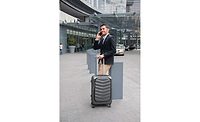Heightened security threats, civil unrest and geopolitical instability are expected to be top disruptors to the mobile workforce in 2020, says a new study by International SOS.
The company's Travel Risk Map and Business Resilience Trend Watch report forecasts the Top 10 Health & Security Risks that organizations should be prioritizing in 2020:
- Risks borne from geopolitical shifts will be the most important mobility challenge for businesses
- Mental health issues will increase in importance
- Physical health: organizations will be more proactive in safeguarding physical health
- Cybercrime is likely to grow and be an increasing risk to security
- Climate change will exacerbate the occurrence of environmental disruptions
- Infectious disease outbreaks from established and newly emerging pathogens will increase due to multiple factors, including climate change, increasing urbanization, diminishing vaccination coverage and security instability
- 'Bleisure' travel: the debate about whether an employer is responsible to cover bleisure as part of employee Duty of Care will amplify
- Millennials and Generation Z entering the workplace with different preferences, expectations and attitudes to risk, will continue to challenge businesses to evolve their risk strategies.
- High profile Duty of Care legal cases will increase
- Start-ups and SMEs that are under-resourced and inexperienced will struggle to meet Duty of Care obligations
Business Resilience Trends Watch Survey Findings
Results from the Business Resilience Trends Watch reveal the top reasons business travel managers expect to change itineraries in 2020, as 51% believe that health and security risks increased in the past year and 47% anticipate risks will rise in the coming year:
- Security threats (68%) – up 23pp on the past year
- Civil unrest (52%) – up 14pp on the past year
- Geopolitical Unrest (52%) – up 20pp on the past year
- Natural disasters (51%) – up 15pp on the past year
Along with these top disruptors, organizations are predicting major increases in the likelihood of having to modify traveler itineraries due to:
- Epidemics (31%) - predicted to be up 19pp compared with actual impact in 2018
- Infectious diseases (35%) – predicted to be up 17pp compared with actual impact in 2018
- Detention and kidnapping (29%) - predicted to be up 17pp compared with actual impact in 2018
Doug Quarry, MD, of International SOS, says, “The threats facing organizations and their workforces are impacting established and emerging economies alike. It’s encouraging to see that decision makers are becoming increasingly aware of the threats of epidemics and infectious diseases. With over $1.7 trillion expected to be invested by organizations by 2022, without taking into account human capital and productivity impacts of travel disruption, it’s important that organizations get ahead of whatever potential disruption they can. With accurate information, tools and support in place, organizations should, and can, plan for the anticipated risks and safeguard their investment and their people.”
The Grey Zones of Risk
Emerging traveler habits, both domestically and internationally, and diversification of the workforce are creating Grey Zones of Risk. Employers are not aligning travel policies with new potential risk factors, and people are choosing not to act within policy if it restricts the use of their preferred mode of transport or accommodation. Surprisingly, says the report, less than a third of organizations include cybersecurity in their travel policies. This could potentially open organizations up to litigation and reputational damage if they are not adhering to their Duty of Care, as well as negative consequences for employees and business, it says.
- Just 11% included shared economy services in their travel policy
- Only 26% of organizations include considerations for female travelers in their travel policy
- 31% cover cybersecurity
- Mental health issues are included in mere 15% of travel policies
- Considerations for travelers with disabilities are covered by only 12%
- Bleisure travel was covered in 22% of policies.
Opportunity for Safety through Technology
David Johnson of International SOS says, “Organizations invest thousands in new tech each year, but very little seems to go on the safety of their people, despite new technology providing excellent solutions to protect employees. From the use of AI in situational intelligence, to e-learning courses and traveler tracking, strides in keeping people safe have been made thanks to new technology.” Year on year, business travel managers continue to struggle with:
- Educating employees about travel risks (53%)
- Communicating with employees during a crisis (47%)
- Confirming with employees that they have read pre-travel information (45%)
- Tracking employee travel (42%)
- Managing a crisis (40%)



